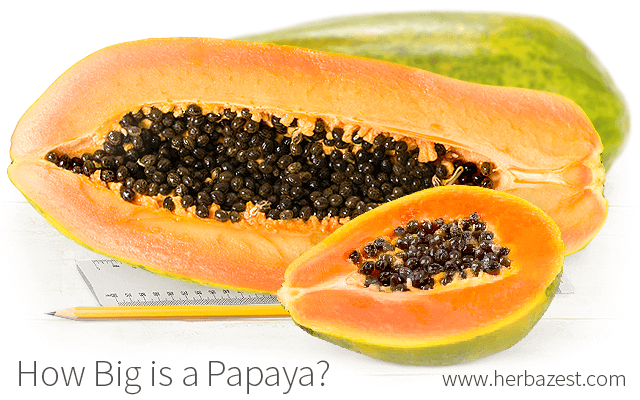With their sweet and succulent flesh, papayas are among the most-traded tropical fruits in the world. Besides their degree of ripeness and the quality of their fruits, papayas size and shape seem to be two determining factors in their commercial success.
Papaya Sizes and Shapes: Trading Standards
Commercially-grown, fresh, raw papayas are intended for immediate delivery to the consumer and are subject to a set of quality trading standards that take into account how big a papaya is, alongside its shape and ripeness. After being gently handpicked from a tree, papaya fruits are graded and carefully arranged in a single layer in polyethylene-lined cardboard boxes within three or four hours of harvest.
Although some factors can vary greatly, quality standards favor uniformity above all else. In fact, papayas of different sizes and shapes are prohibited from being mixed within the same container.
Also, determined by the sex of the papaya tree rather than the specific cultivar, papaya fruits' shape can be round, oblong, or even pear-like. Even though there is no difference in tasting experience, personal size, pear-shaped papayas, such as the hawaiian papaya, are the most popular on the world market, fetching premium prices.
Big and Small Papayas
As a general rule, the larger papaya fruits are, the cheaper their prices are per pound and the less commercial significance they hold. Small papayas, on the other hand, seem to generate more consumer interest because of their compact sizes and longer shelf-life.
While consumer demand for large papayas usually invoke the Cuban 'Maradol,' this and other large varieties are prone to drought and cannot survive without consistent irrigation. Their large, watermelon-like fruits are particularly favored by Latin American consumers who are more familiar with them.
Although Hawaii is a major producer of this tropical fruit, the vast majority of papayas consumed in the U.S. come from Mexico and other surrounding regions that cultivate the 'Maradol' papaya. Sometimes weighing as much as six pounds (2.75 kg), these large, red papayas grow from dwarf trees and have a sweet, pleasant taste.
On the other hand, with small fruits of less than 20 ounces (600 g), the Hawaiian 'Solo' is the most popular papaya in the world. From this variety, several prominent, crossbred cultivars have been created, such as 'Kapoho,' 'Sunset,' 'Waimanalo,' and 'Sunrise.' All of them boast flavorful, single-serving fruits of exceptional quality, but the 'Sunrise' papaya has the highest sugar content and best flavor.
How big is a papaya? As it turns out, the answer is quite complex. Predicated on a number of genetic factors, papaya's size is an essential determining factor in the commercial value of these tropical crops. In recent years, selective breeding programs have sought to foster greater uniformity in papaya growing - especially as it pertains to producing small papayas of excellent flavor and adequate quality.
Sources
- Food and Agriculture Organization (FAO), Draft revised codex standard for papaya, 1999 | Pawpaw (papaya): Post-harvest operations
- Genetics and Genomics of Papaya, p. 8
- International Tropical Fruits Network, Papaya varieties | Common varieties
- Plant Breeding Reviews, The origin of fruits, fruit growing, and fruit breeding, 2005
- University of California, Papayas




